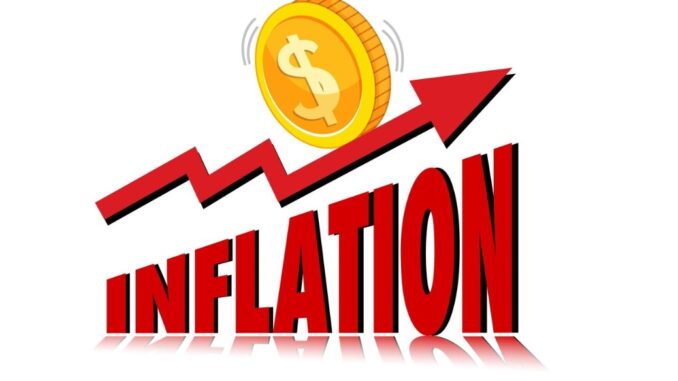
Inflation eases in January
by Prachi Patel
According to recent data from Statistics Canada, Canada's inflation rate has decreased to 2.9 percent, primarily due to base effects like last January's winter storm, which inflated gasoline prices. Economist David Macdonald points out similar effects in grocery prices, which surged in late 2022 and early 2023. However, concerns persist over the soaring costs of shelter, particularly rent, driven by housing shortages and rising interest rates. Macdonald anticipates more households feeling the impact as fixed-rate mortgages renew at higher rates. Despite hopes for a rate cut, Macdonald suggests it's unlikely until later in the year, as the Bank of Canada seeks to balance inflation management with economic growth.
Rent in Toronto continues to increase with the rise of inflation
by Allan Gonzales
The cost of rent in Toronto has increased over this past year. According to 2023 Q4 Rental Market Statistics released the Toronto Regional Real Estate Board (TRREB), leasing activity continues to be strong within the fourth quarter of last year. In 2022, The cost to rent a one-bedroom apartment has increased by 2.2 per cent to $2,552 and 3.7 percent to $3,267 for a two-bedroom apartment. For a Bachelor apartment, the average rent increased by 2.7% with the average lease rate costing $2,156.
The average lease rate for a Bachelor apartment cost $1,964 in York Region and $1,962 in Peel Region. For Durham Region, the average lease rate cost $1,540 making it cheapest out of all the areas in TRREB.
TRREB President Jennifer Pearce says that “The demand for rental housing remained strong in 2023, clearly bolstered by strong population growth driven by immigration and non-permanent migration into the Greater Toronto Area (GTA).”
Navigating Shrinkflation
by Prachi Patel
Shrinkflation is a tactic where companies provide lesser amount of product or with smaller packaging but keeping the price same. Canadians are fed up from shrinkflation. Noe let’s take a look at some examples.
- Kirkland Bath Tissue
People are noticing about the shrinkflation all around the Canada and people are sharing images of before and after the shrinkflation hit. Kirkland’s bath tissue before shrinkflation was 425 sheets per roll which has now decreased to 380 sheets per roll. Which leads to around 10% of reduction in the product, but the price remains same which is $22.99.
- Pringles
Old design of pringles use to provide 165 gm whereas new packaging of pringles has shrinked to 134 gm . Not only the packaging it but the chips are also almost half the size it was before.
- Barilla Spaghetti
This product weighed 454 gm at the cost of $1.97 at Walmart across Toronto. Afterwards the product shrank to 410 gm.
Understanding January’s Consumer Price Index.
by Usama Zafar
As students and young adults navigating the complexities of budgeting and financial planning, keeping an eye on CPI is crucial for understanding how prices of goods and services are changing over time. Now let’s look at key takeaways from January’s CPI report and how it affects us:

Gasoline Prices Dip, but why?
Gasoline prices took a downturn in January, falling by 4.0% compared to December’s increase of 1.4%. This drop attributed in part to a base-year effect, might seem like good news at first glance for those who reply on cars for transportation. However, it’s essential to understand the broader economic factors influencing these fluctuations, such as refinery closures and provincial tax policies.
 Grocery Prices Rise But Stay High:
Grocery Prices Rise But Stay High:
Grocery prices continued to rise, but in January they did so more slowly than in December. For students and young adults who frequently manage tight budgets, this is especially pertinent. Making more informed purchasing choices can be aided by knowing certain food items—like soup and bacon—are becoming less expensive while others—like bakery goods and other food preparations—are still rising in price.
 Seasonal Trends and Discount Airfare:
Seasonal Trends and Discount Airfare:
When compared to January of last year and the preceding month, airfare costs dropped significantly. This fall is common following the holidays when demand for travel declines. Understanding these seasonal variations can help students schedule purchases for the best discounts whether they are taking vacations or returning home for breaks.

Costs of Cellular Services:
The increase in cellular service pricing in January over December was one significant shift. This could surprise you, especially in light of the huge drops we saw last month. Young adults and students who primarily rely on mobile devices for communication and education should be aware of these changes, particularly if they have an effect on their monthly costs.
Differences by Region:
It's also critical to comprehend how regional variations in pricing patterns differ. Due to increased electricity costs, Alberta saw an increase in pricing in January, while the majority of provinces had less price rise. In a similar vein, policy changes—such as Saskatchewan's removal of the carbon tax, which had an impact on natural gas prices—showcase how regional variables can effect living expenses.
Making Well-Informed Decisions and Preparing Ahead:
Being aware of these economic indicators helps us, as young adults and students handling our finances, to make better judgments. Whether we're planning a trip, setting aside money for groceries, or taking long-term costs like utilities into account, knowing how prices are shifting can help us predict expenses and modify our financial tactics accordingly.
In conclusion, the January CPI report provides insightful information for students and young adults attempting to understand the realm of personal finance, even though it may appear to be a dry set of data. Our daily financial decisions and budget management can be improved by keeping ourselves informed and seeing the patterns hidden in the data.





Be the first to comment